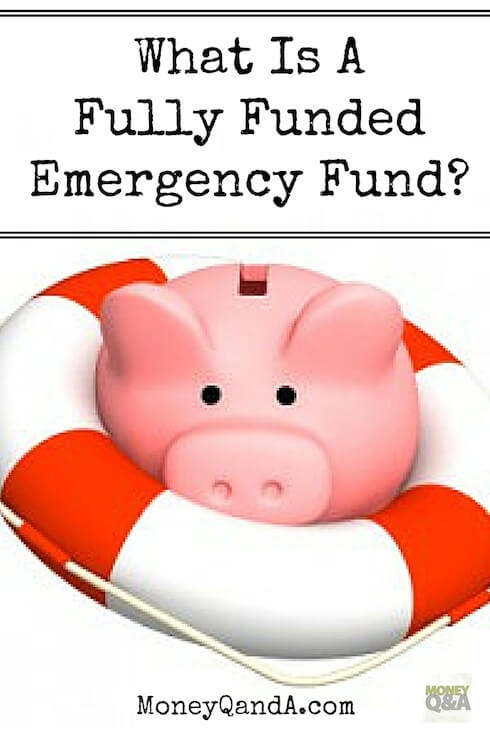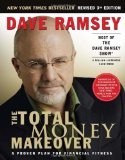The other day I wrote an overview of Dave Ramsey’s baby steps system from his book, The Total Money Makeover. There are seven baby steps that you should follow in order that will lead you to financial peace that he discusses in his book which is one of the Top Ten Personal Finance Books of all time that you should be reading. Today, we’re going to focus on baby step 3. Dave Ramsey’s baby steps are…
Baby Step 1 – $1,000 Emergency Fund
Baby Step 2 – Pay Off All Of Your Debt With A Debt Snowball
Baby Step 3 – Fully Fund Your Emergency Fund
Baby Step 4 – Save 15% of Your Income For Retirement
Baby Step 5 – Save For Your Children’s College Education
Baby Step 6– Pay Off Your Mortgage Early
Baby Step 7 – Build Wealth And Give
Baby Step 3 – What Is a Fully Funded Emergency Fund?

Most financial planners, Dave Ramsey included, recommend that you have an emergency fund that has three to six months of living expenses. This is one of his core tenants in his book, The Total Money Makeover and it is Baby Step 3.
Recently, I have been seeing many people saying that your emergency fund should be three to six months of your income, but that will actually equal a little more than you really need. Your initial goal should be three to six months of living expenses which will obviously be a little less than your total income.
If you have a real emergency or are out of work for an extended period of time, it is assumed that you will stop spending money momentarily on certain activities such as investing for retirement, eating out at restaurants, and other nonessential things. That is why you can get away with saving expenses and not your total take-home paycheck.
Three Months or Six Months in an Emergency Fund?

Why do financial planners give people a range of three to six months worth of savings in an emergency fund? One thought is that you can potentially save less for your emergency fund if your job security is very certain.
For example, many government workers have excellent job security. They could arguably survive on a smaller emergency fund than other people with less job security. If you are self-employed, you may need to save more than six months in an emergency fund in order to feel secure.
These are just rules of thumb, and you should save as much money as you need in order to provide yourself and your family with security and peace of mind. If that means that your emergency fund is over six months worth of your take-home pay or closer to one year’s worth of living expenses, then that is okay to hold an amount that will help you sleep at night.
Where Should You Put an Emergency Fund?
I have touched on this topic a little bit before. You should have your emergency fund saved in a money market or savings account that is secure, FDIC insured, and liquid.
You do not want to invest with your emergency fund. You want to be able to have access to your emergency fund if there is truly an emergency. I know that money market accounts and savings accounts are not earning very much in the way of interest rates, and it can be fairly depressing to have $10,000 or $20,000 in a fully funded emergency fund just sitting idle and not earning a decent rate of return.
Where to NOT Keep Your Emergency Fund
Most financial planners recommend investing in stock and mutual funds with money that you will not need to use in the next five years. The problem with emergencies is that you never know when they will crop up. They have a bad habit of always happening when they are least expected and often when you can least afford it.
That is why it is very important to not have your emergency fund in mutual funds and other investments. You want to be able to have access to your money in an emergency. You want your funds to be very liquid with little to no time or cost associated with pulling that money out of your emergency fund.
Many people have the urge to invest that money into an investment that earns a little be more rate of return. But, you should not have your emergency fund locked up in mutual funds or certificates of deposit that will penalize you for withdrawing your money in an emergency. These are long-term investments, and they should be viewed as such.
These investments are not a place for your emergency fund. Bite the bullet and leave your emergency fund in a place where you can get to it very easily and forgo those few percentage points.
Now that you have paid off all of your debts, you should have a large amount of disposable income that you can rapidly complete your emergency fund. You already have $1,000 in your emergency fund from Dave Ramsey’s Baby Step 1.
Now, it is time to take the money that you were paying on your car loan, credit card bills, and other debt and put it towards completing your emergency fund. You need a fully funded emergency fund of three to six months of your living expenses set aside for a rainy day. Doing so will help you never to fall into the debt trap again. This is Dave Ramsey’s Baby Step 3.
Recap – A Fully Funded Emergency Fund
What is a fully funded emergency fund? In most cases, people set up an emergency account at a bank as the place to store their emergency funds. It’s important to have a fully funded emergency fund so that you can handle any potential unexpected expenses that come your way without racking up more debt on credit cards or putting yourself into a bind financially.
Running out of cash is not only stressful, but it can be disruptive and even lead to worse financial problems down the road if not dealt with properly. A good emergency fund helps provide some financial padding and stability in times of crisis by giving you income when most needed. Having this liquid savings cushion helps prevent further damage like unpaid bills, delinquencies, and missed opportunities.
What is considered a fully funded emergency fund? A fully funded emergency savings account is one that has at least six months of average monthly expenses saved up in it. This means having enough money to cover 6-12 months worth of living expenses, which gives you the cash flow you need to handle unplanned expenses without resorting to stressing about not being able to pay your bills. Having this emergency fund also helps prevent taking on more debt, which can put you in an even worse position when it comes time to fix unforeseen problems.
Do you have a fully funded emergency fund – Baby Step 3? What’s holding you back?
Baby Step 1 – $1,000 Emergency Fund
Baby Step 2 – Pay Off All Of Your Debt With A Debt Snowball
Baby Step 3 – Fully Fund Your Emergency Fund
Baby Step 4 – Save 15% of Your Income For Retirement
Baby Step 5 – Save For Your Children’s College Education
Baby Step 6– Pay Off Your Mortgage Early
Baby Step 7 – Build Wealth And Give



Jay,
Thanks for the question. Yes, ING Direct offers a great savings account, one of the best rates of return you can find now a days, liquid, immediately accessable access to your funds in an emergency, etc. It’s a good choice for sure. Thanks!
Another great reminder on why emergency funds are so important. It is shocking to me how many of my friends have ZERO savings, yet they are buying new cars, toys, and furniture. It makes me scared for them.
Question, after having an emergency that wipes out half our emergency fund, do we return to baby step 3 and pause baby step 4? Or do we continue saving for retirement and slowly rebuild our emergency fund?
CG, you should return to Baby Step 3 and rebuild your emergency fund back up. Great question. Thanks!